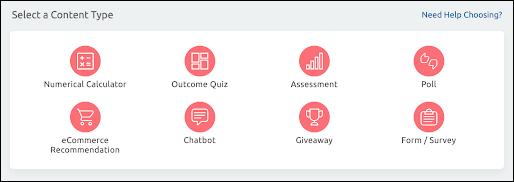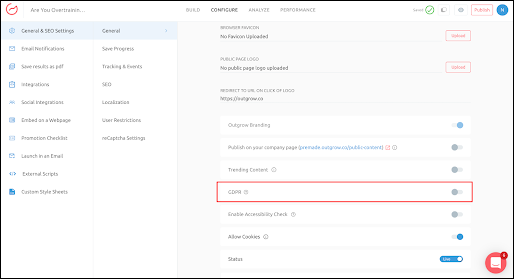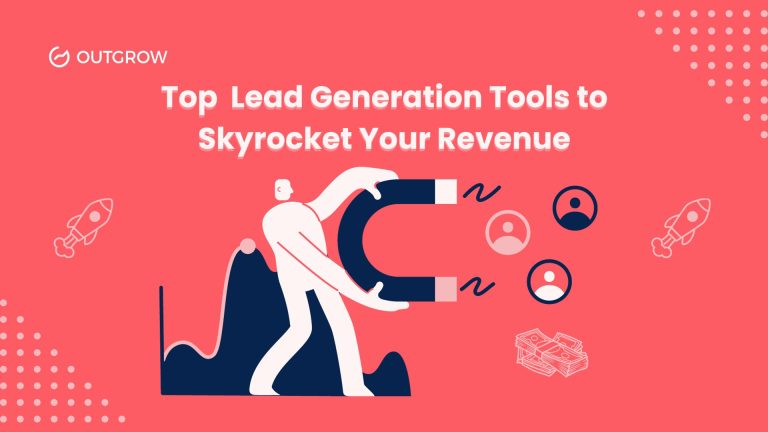How Does GDPR Affect Advertising? [Problems & Solutions]
Table of Contents
Since the introduction of GDPR, there’s been an increasing need to find more effective ways of collecting data rather than just relying on third parties. So, in this blog, we’ll answer questions like how GDPR affects advertising and come up with some effective solutions for effective data collection.
So, without wasting too much time, let’s dive right into the details.
What Is GDPR?
Known as the toughest privacy law in the world, the General Data Protection Regulation (GDPR) was passed by the European Union (EU). It imposes restrictions on all the organizations that come under the gambit of the European Union, or those who target or collect information related to the people in the EU.
The basic purpose of GDPR is to protect personal data. So, it requires organizations to do the same, as well as provide proof about how data is being protected by them.
Scope and Penalties
Let’s discuss the scope of GDPR and the penalties of non-compliance-
- The GDPR applies to everyone who is a part of the EU. Moreover, it also applies to those who process data for EU citizens or provide goods or services to them.
- The GDPR fines for non-compliance with the data protection rules are very high. The penalties max out at €20 million or 4% of global revenue. Moreover, the data subjects have the right to claim damages.
Impact on Online Advertising and Marketing [The Problem]
Data is now the center point of the marketing world. Day-to-day marketing operations like advertising, lead generation, sales, etc. are all largely dependent on personalized data. Hence, data collection is a very important part of advertising and marketing, and the GDPR affects advertising from this very step.
Earlier, you were allowed to collect data from anyone and any preferred source, but not anymore. You can no longer pick up third-party data from any source at your convenience.
According to the GDPR, in order to use a person’s data, you need to have a company’s explicit permission. Thus, this has come out as a huge burden on advertisers who solely rely on third-party data.
Marketers and advertisers who do not have direct access to the user info generally rely on third party data that’s mostly obtained without the users’ consent. But this can be extremely troublesome as a violation of GDPR requirements can lead to very high penalties. Thus, this calls for an effective solution that advertisers and marketers can rely on for gathering their own personalized data. By including a privacy impact assessment, this can ensure organizations understand the potential risks and implications of their data collection practices and privacy related risks with their marketing efforts.
How to Collect Data With Ease? [The Solution]
With the phase out of third-party cookies, an urgent need for an efficient way to collect personalized data had arised. This was where the first party as well as zero party data came into the picture.
Let’s see how they’ve helped marketers overcome the major setback caused by the GDPR guidelines.
1. First Party
As the name suggests, first-party data is data that you can collect firsthand from your clients. This kind of data provides you with a crystal clear picture of your audience. You can collect first-party data from various sources, such as-
- Website and Application Analytics- You can gather and analyze data from the analytics tool you’ve synced with your website. This data is generally collected via search engine tools like Google Analytics, Google Search Console, etc. So ensure that you’re making full use of these website and application observability tools.
- CRM Tools- To make data absorption easier, you can integrate your product/software with your CRM tool and pass on all the data you’ve collected over there.
- Social Media Accounts- Social media is a great way to collect first party data. You can gather information about your followers from your social media accounts and process them as per your requirements.
2. Zero Party
Zero party data is the data that customers share on their own.
This can include information regarding purchase intentions and decisions, preferred modes of communication and payment, and how they want your brand to recognize them.
An easy way of collecting zero party data includes asking for information in exchange for something of value to the customer. You can do this through via multiple sources such as-
- Interactive content such as quizzes, calculators, product recommendations, chatbots, giveaways, etc. are great tools to collect information that your users intentionally provide while engaging with you. Simply create and promote your interactive content piece and collect loads of data.
- Free resources such as an e-Book or a newsletter subscription can help you get information through the subscriptions that your users opt for. You can make use of this information for expanding your newsletter readers or podcast listeners.
- Surveys & Customer Feedback Forms are the most convenient way to collect firsthand information from your audience. Apart from helping in lead generation, they also allow you to ask certain questions that you might have. This way you get to collect important data directly instead of analyzing and recording their preferences and behaviors.
The major difference between first party and zero party data is that for collecting zero party data, you need to directly interact with your customers. Whereas, first party data can be collected from the analytics and user behavior recorded on your website.
How can you Collect First Party Data With Outgrow?
We’ve already discussed how interactive content can come in handy when it comes to collecting zero party or first party data. So, let’s see how Outgrow can help you do the same.
Using Outgrow’s interactive content builder, you can create GDPR compliant, privacy-first content that can help you collect first party as well as zero party data with extreme ease.
This will not only make advertising easy for you, but will also give you an edge over your competitors. How? Because interactive content helps boost engagement and the overall conversion rate.
So, without further ado, let’s have a look at the steps to create GDPR compliant content on Outgrow-
- Log in to your Outgrow account. If you haven’t already signed up, check out our 7-day free trial.
- Here, you’ll find a variety of content types to choose from depending on your requirements. Select a content type and choose an appropriate layout for your content.
- Once you are in the builder, you can set up the questions, results, and display settings.
- Now, in order to set up the GDPR settings, navigate to the Configure tab. Under the General & SEO Settings, you will find GDPR. You can set it up as per your requirements.
Note: Check out our support doc on Enabling GDPR Settings for more information.
5. Once you’ve set everything up, you can click on “Go Live” on the top right of your screen and you’re good to go.
Need a more detailed article on the above-mentioned steps? Check this blog out!
Conclusion
While GDPR has had a massive impact on advertising and the entire data collection mechanism, the world doesn’t end there. With advancements in technology, marketers have come up with effective ways to collect first party and zero party data. This eliminates the need for third party data and solves the entire problem.
So, there you go! We’ve talked about how does GDPR affect advertising and how you can tackle it without hiring any experts! We really hope that this information comes in handy for you! 🙂
To kickstart things, you can try creating GDPR compliant interactive content on Outgrow. How about conducting a free survey or collecting information through a free customer feedback form? Sign up for Outgrow’s 7-day free trial and see for yourself!








